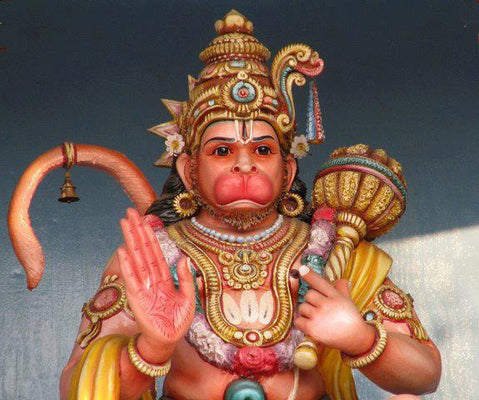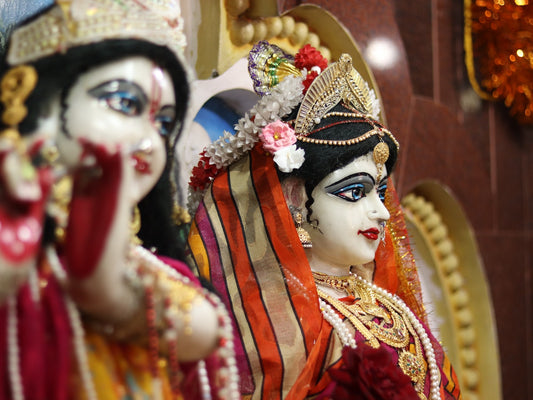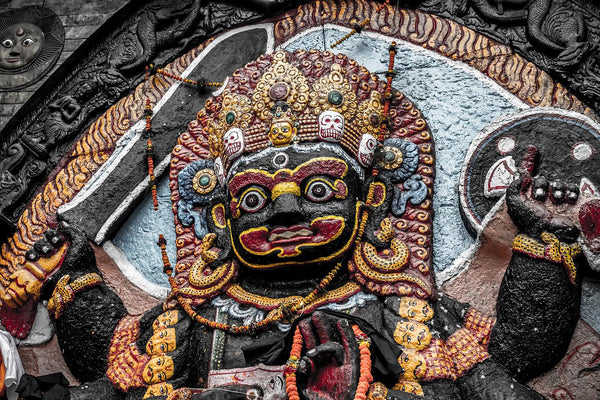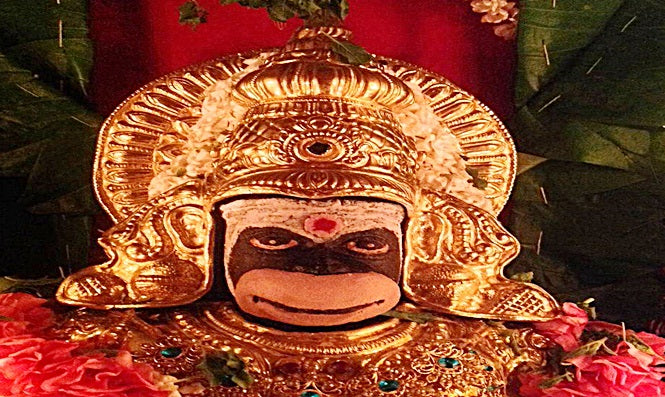Rangoli

RANGOLI is part of Hindu life. These ancient symbols has been passed down the generations and keeping the tradition intact. It is a symbol of religious and cultural beliefs. ‘Rangoli’ is a combination of the words ‘rang’ meaning colour and ‘aavalli’ meaning ‘coloured creepers.’ Avalli can also mean ‘row of colours’. It is also said to originate from two words ‘Rang’ which means colors and Holi which means celebration. In this sense Rangoli is an artistic celebration of colors.
In South India it is known as ‘Kolam’, ‘Chowkpurana’ in Northern India, ‘Madana’ in Rajasthan, ‘Aripana’ in Bihar and ‘Alpana’ in Bengal. Traces of rangoli art has been found in the Mohen jo Daro and Harappa civilization where it is known as ‘alpana’ deriving from the Sanskrit ‘Oalanpeen’ meaning ‘to plaster.’
SIGNIFICANCE: Symbolically, Rangoli has a deeper meaning. First it points towards beautification. This, like every endeavour in life only comes with dedication, focus, skill and commitment. Secondly it is indicative of the positive and negative energy that dwells the atmosphere. Negativity is said to get entangled in the rangoli designs. They are said to absorb negative effects or evil and prevent harm. Thirdly they represent ‘Vasudaiva kutumbanam’ – the world is one family, as even birds and insects feed on rangoli constituents. Rangolis are drawn using rice flour or dried rice powder to feed birds and tiny ants or insects before house-hold members can have their meals. The concept of feeding birds can be seen in many households leaving part of the cooked food for birds before lunch or dinner is served. Fourthly it is symbolic of impermanence as ‘in a day or two, it has to go’ or cleared up.
MYTHOLOGICAL EVENTS point to a legend recorded in Chitra Lakshana. In this legend the son of a King’s high priest died. Brahma, Lord of the universe is approached to bring the boy back to life. Brahma asks the king to paint the likeness of the boy for Brahma to breathe life into him again. The king not only paints the boy but also the boys favourite girl. They come to life and rangoli also became a form of a women self portrait. Another version states that God, in one of his creative episodes, extracted the juice from one of the mango trees as paint, and drew the figure of a woman so beautiful that it put the heavenly maidens to shame.
In the South Indian state of Tamil Nadu, legend has it that the saint Andaal worshipped Lord Vishnu and was married in the moth of ‘marghalzhi’. During this month young Hindu damsels rise before dawn and welcome the Lord by drawing rangoli.
SACRED RANGOLI: This is a sacred art known as Sri Chakra. It is a geometrical figure, which has many intertwined triangles, and is considered the symbolic representation of Goddess. In many parts of southern India , the Sri Chakra kolam is drawn elaborately, a lamp is lit, and the sacred Lalitha Sahasranamam in which one thousand names of the Goddess is chanted. Hridaya Kamalam or Lotus Heart is common sacred rangoli.
ART: Rangoli is one of the most popular art forms in India which started as a traditional decorative folk art. It is a form of sand-painting decoration that uses finely ground white powder and colours. Rangoli can be use as wall art or as floor art. Rangoli is used commonly outside homes in India. It is an aged old symbol which survives to-date, in fact, with all its improvements of the art.
Rangolic is made in both the wet and dry forms. In the deep South and South West of India and Kerala, flowers are also used to create floor art. There has been much improvisation and improvement of the art to depict elaborate and detailed images. The images start of as dots which later take-off as beautifully shaped figures and shapes. Rangoli is a free-hand art created directly on the ground or floor. The designs are symbolic and common to the entire country, and can include geometrical patterns, with lines, dots, squares, circles, triangles; the swastika, trident, conch shell, footprints of Gods and Goddesses. These motifs often are modified to fit in with the local images and rhythms.
Originally Rangoli was done in small patterns of ten-feet squares but nowadays entire floor areas of rooms and hotel foyers are covered in intricate detailed designs. Traditionally, such floor decorations were done only on auspicious occasions or festivals. But today, any occasion is good enough — weddings, birthday parties, opening ceremonies, etc.
MOTIFS: The motifs in traditional Rangoli are usually taken from Nature. Usually auspicious symbols are preferred. Its major symbols is still the lotus flower, it’s leafs. Other patterns are mango, mango leafs, fish, peacocks, swans and different kinds of bird species, various forms of flowers, creepers, tendrils. Human figures are also depicted as long as they do not undermine the spirituality of rangoli. Thus a human figure symbolising ‘namaste’ is acceptable. Depictions of Lord Ganesha and Goddess Lakshi is also common. The symbol Om is a common sight.
TRADITIONS IN SOUTH INDIA
KOLAM: Is generally drawn at the entrance of a house or any other building. Dried rice flour or other types of white dust powder is used for drawing kolams. South Indian women are creative. It is mostly a delightful group effort during religious function whereas kolams in front of the house are individual obligations. Kolam in a south Indian household is traditionally observed during auspicious days and events. The patterns range between geometric and mathematical line drawings around a matrix of dots to free form art work and closed shapes.
It is a sign of invitation to welcome all into the home. The rice powder is said to invite birds and other small critters to eat it, thus inviting other beings into one's home and everyday life, a daily tribute to harmonious co-existence. In olden times, other than a decoration, kolam made of coarse rice flour, were used for to treat ants so that they don't have to work so hard for a meal.
Folklore has evolved to mandate that the lines must be completed so as to keep evil spirits away. The designs are drawn by taking the sand powder between the forefinger and thumb and by dropping the loose sand in a controlled way through their fingers. It takes a while to get the technique right. Once you do, you can design any kind of shapes and patterns.
POOKALAM: Pookalam is an elaborate and colourful arrangement of flowers laid on the floor. During the popular festival of Onam, every household in Kerala decorates Pookalam, also known as 'Aththa-Poo' because it is considered auspicious to prepare it as a welcome for Mahabali, a king who is believed to visit Kerala during Onam. The flowers used Various flowers are used on each day as a specific flower is dedicated to 10 each days of Onam.
Commonly used flowers include Thumba (Lucas Aspera), Kakka Poovu, Thechipoovu, Mukkutti (little tree plant), Chemparathy (shoe flower), Aripoo or Konginipoo (Lantana), Hanuman Kireedom (Red pagoda plant) and Chethi (Ixora). Of all these flowers, Thumba flowers are given more importance in Pookalam as they are small in size and glitter in the the soft rays of the sun. 'Thumba Poo' is also considered to be the favourite flower of Lord Shiva and King Mahabali was a devout worshipper of Shiva.
TRADITIONS IN NORTH AND CENTRAL INDIA
Maharashtra: In Maharashtra Rangoli is the state of art during the Festival of Arts, Diwali. While preparing for Diwali celebrations, houses are cleaned prior to decoration. This is to please the Goddesss of Wealth'. Every corner of the house is cleaned thoroughly. The compound is also decorated and lights are lit to beautify Diwali nights.People decorate their 'puja ghar' or 'mandir'(which mean place of worship), their backyard, verandahs, rooms, kitchen, walls and entrance with beautifully designed Diwali torans and Rangolis. Some of the popular themes of Diwali rangoli are the signs of Om , swastik, leaves of Ashoka tree, mangal kalash, lighted diyas, shree, lotus and other flowers.
Bengal: In Bengal, the floor painting is called 'Alpana'. The white designs known as Alpana are found on the patio, floors and walls and on large pots and vessels. Rice, the staple food of Bengal , is the medium used in Alpana and the motifs are created mainly by women. The technique of painting using the white flour is referred as gunrichitra or dhulichitra. The designs are quite similar to the kolams or rangoli in South India .
‘Atap’ rice, non-parboiled form of rice, is used to make the powder. The short-grained variety of ‘Atap’ is the widely used one. The rice is soaked in water to soften for few hours and it is then dried. The rice is then ground to a fine powder. This powder is used in Alpana. One of the common methods of drawing Alpans is by creating a paste from the rice powder. The rice powder is mixed with water to create a thick paste. A small piece of paper or cloth is folded to form a wick and is dipped in the rice paste to draw various designs. Occasionally, colored dyes are also added to the white paste.








